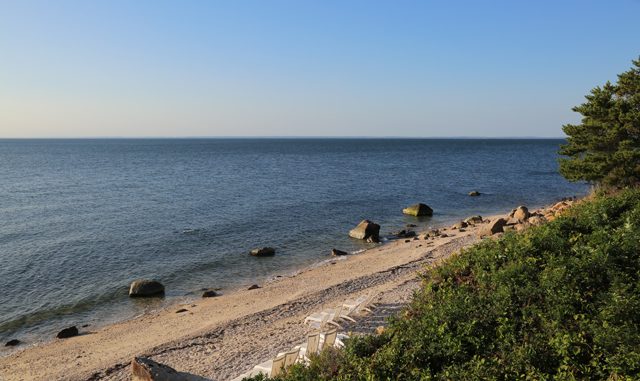
All in all, there is good news in Save the Sound’s 2022 Long Island Sound report card, which gives high grades to the eastern basin of the Sound, but slightly lower grades to Mattituck Creek and Goldsmith Inlet, both in Southold Town.
The eastern basin is a wide section of Long Island Sound that extends from Riverhead to Orient Point. According to the report card, the water quality in the eastern basin has been stable for the past 14 years. The group, which is based in Mamaroneck, N.Y., and New Haven, Conn., gave this section of the Sound an A+ grade.
This wide swath of saltwater has been consistently clean, the report states, made possible by the strong tidal exchange with the Atlantic Ocean, as the Sound waters wrap around Orient Point and join up with the ocean.
The group gave the section of the Sound from Port Jefferson to Riverhead an A grade. The group has been testing Sound water quality for 14 years. For the past four years, the group has also been testing more than 50 bays and sections of bay waters across the region.
Despite what is overall a good report, the report states that some efforts towards improving water quality in the region have stalled. This can be seen in the 53 sections of bays that were monitored; more than half of those bodies tested received grades ranging from C to F. The two Southold saltwater areas mentioned in the report, Mattituck Creek and Goldsmith Inlet, were given B- grades.
The report highlights an interesting point: that high water quality in the Sound does not mean nearby bays will be similarly impacted — meaning a clean Sound doesn’t always mean the bays it connects with will also be clean.
“It’s also clear that there is much to be done, particularly in stressed bays throughout the length of the Sound, as well as in the western Sound,” said David Ansel, regional director of water quality for Save the Sound. He said that investments in infrastructure improvements will lead to significant benefits in water quality.
The issue that will impact all water quality over the region is climate change. Two senior science advisors to the 2022 report say climate change could wreak havoc on the region and roll back any measurable gains made in past years.
The report cites a 2021 study by the University of Connecticut that showed that average water temperature in the western Long Island Sound has increased by 1.4 degrees Fahrenheit in recent years.
“The warmer the water, the less oxygen it is able to hold,” the report states. Lower oxygen levels starve out shellfish such as scallops, once one of the most lucrative shellfish in the Peconic Bay system.
The quality and richness of the Sound and our bays — so critical to baymen and fishermen — is one of the many reasons eastern Long Island is such an ideal place. Saving farmland and open space will keep salt creeks healthy; healthy creeks flow into the bays and help keep them clean.
Everything is interconnected. We cannot let down our guard on water quality or on land preservation. Without both, the region will lose what makes it unique.
To read the report, go to savethesound.org.

Be the first to comment